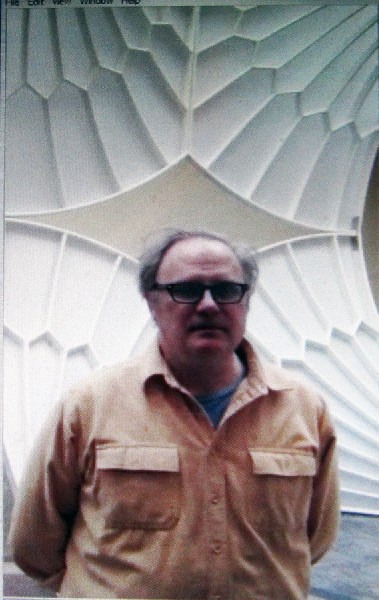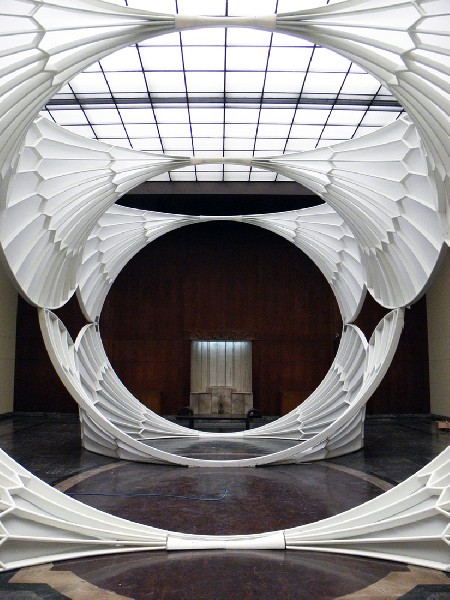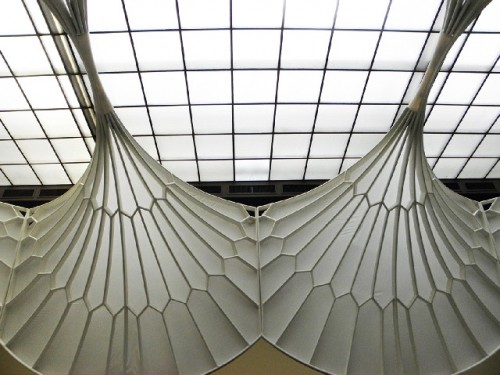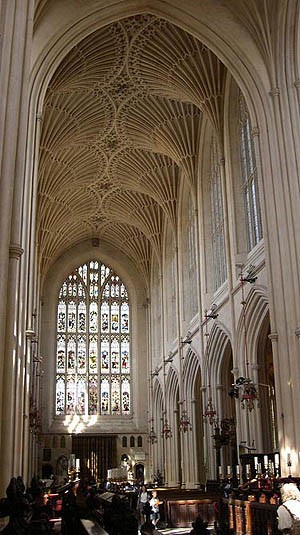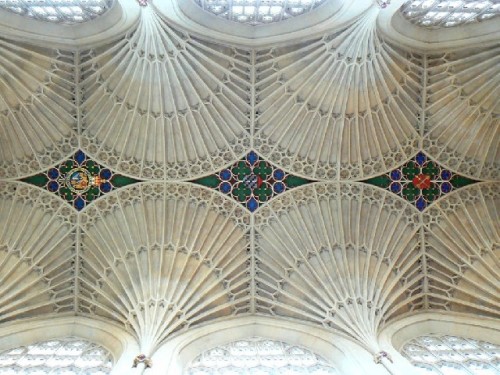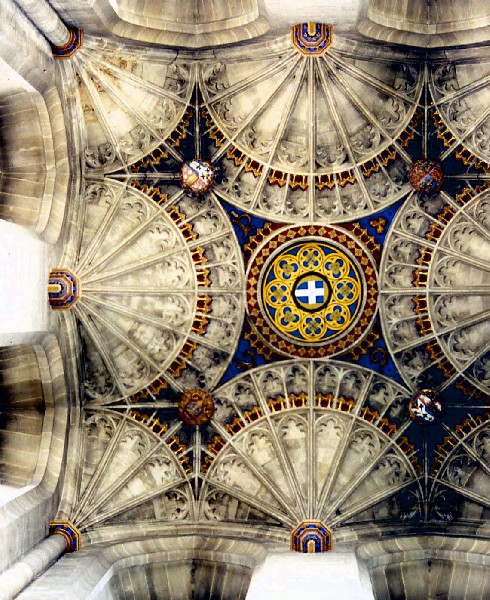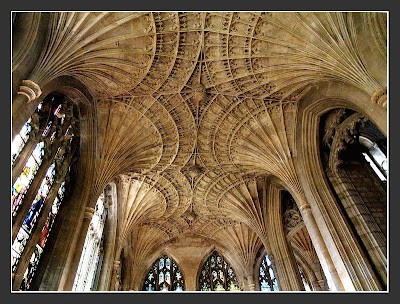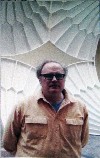David Henderson: A Brief History of Aviation
Berkshire Museum March 10 to May 13
By: Charles Giuliano - Mar 09, 2012
It was late Friday afternoon when we arrived at the Berkshire Museum in Pittsfield. We hoped to get a preview of the installation by David Henderson which has its official opening tonight.
We were informed that the Crane Gallery was closed all day for installation.
The pr person Lesley Ann Beck came to the front desk. She wasn’t sure of the state of progress but would poke in and ask the artist.
A few suspenseful minutes later we were given the all clear.
Actually intercepting the artist in work clothes coming down the stairs.
After salutations we entered the large, handsome space, awash with soft natural night from its skylight/ ceiling.
From images I had seen in the media the gossamer work was enticing but I didn’t know what to expect.
Upon entering the space there was a wham, bam, high impact in your face, wow, kawowie.
It is the kind of large scale work which one consumes in a mili-second that arguably resides forever in the subconscious as an after image.
Mostly because it instantaneously kicked in an arsenal of received art history.
The shock factor neatly conflated present, a formidable, free standing, room filling object assembled from light weight modular elements. And the past. Specifically, late Gothic cathedral structures in which anonymous architects through engineering managed to make ceilings lighter and stronger.
There was an evolution from cross vaulting. This doubled the strength and halved the load of the initial barrel vaults of the Roman inspired basilica. Then further bisected into groin vaults. Ultimately culminating in the multiple segmenting and delicate design of dramatic, light and strong fan vaults.
This resulted in making cathedrals ever taller in a striving to God in Heaven above.
Ad astra per aspera.
In other words through the sweat equity of generations building the great cathedrals the anonymous workers, from which emerged the guilds, earned their keep in the hereafter.
Centuries later we are wafted aloft by the spiritual soaring of those hallowed spaces.
We asked the artist if the work had come out of a background in design and engineering?
The critic likes to complicate and obfuscate things while artists are often stunningly simple in their plain text responses.
To a complicated theoretical preamble, after a pause, Henderson said something like “yeah.”
Pregnantly.
We both laughed.
“I like to build things” he elaborated.
There was a hands on sensibility as he discussed the materials and process of fabricating the modular elements from Styrofoam, resin for strength and rigidity and then stretching over it a Dacron skin which was translucent to the ambient light.
The individual elements weigh about 25 pounds. The entire structure when assembled is about 400 pounds. Four hefty men can move it about in the space. Which is exactly what had been done to find just the right angle and view.
The piece is so large it consumes the generously scaled gallery. That doesn’t leave much room to step back and view the outer surface. We are mostly compelled to step inside the belly of the beast.
Which the artist likes.
His preferred view in fact like being in a cathedral and looking up at the vaulting.
Which brought up Bath Abbey which directly inspired him.
It reminded me of the Baptistry of Salisbury Cathedral which is a relatively short drive away in the neighborhood of Stonehenge. In a tour down from London one tends to bundle these sites during a day trip.
Unless you stop at a pub which can stretch your visit into a fortnight.
Surely that was true for the Pilgrims of the Canterbury Tales.
As you can see Henderson’s work powered an avalanche of associations and evocations.
This installation at the Berkshire Museum is actually the fourth time the work has been seen. It was installed at Smack Melon Gallery in Brooklyn where the artist lives. There curators saw it and brought the work to Mass College of Art. It next moves on to a college in the South.
It is easily dismantled and shipped. So Henderson will keep it on the road for as long as he can. On his IPhone Henderson showed us images of some his smaller, exsquistely crafted sculptures.
For the next couple of months drop by the museum and take a gander.
See if the experience is as trippy and fun for you as it was for me.
Far out.
The Berkshire Museum's press release appears below.
Press release
Berkshire Museum will present David Henderson: A Brief History of Aviation, from March 10 through May 13, 2012, featuring an installation of the elegant, architectural sculpture of artist David Henderson in the Ellen Crane Memorial Room. An artist’s reception will be held from 5 to 7 p.m. on Saturday, March 10; the event is free and open to the public.
The large-scale, curvilinear components of Henderson’s installation, configured differently in each venue where they are exhibited, were inspired by the beautifully complex fan vaulting of the sixteenth-century cathedral called Bath Abbey in England. Fan vaulting is a Gothic architectural element first used in the twelfth century. Imbued with a spare beauty, the converging curved ribs of each fan-like section form sweeping shapes reminiscent of spread wings, combining strength and delicacy.
“The fan vaulting was only used in a few cathedrals in England, probably because it was quite complex, geometrically,” David Henderson explains. “It’s extraordinary that someone could build something like this in the twelfth century. My idea was to take the structure out of the religious context and see what it would do in a normal context, made out of different materials.”
Henderson creates his fan shapes from materials and methods that are used in building ultra-light aircraft. The ribs of foam are wrapped with fiberglass and the assembled structures are skinned with Dacron fabric, heat-shrunk for a perfectly smooth fit. The work is planned on a computer and then meticulously hand-crafted; the segments of the piece have to be constructed with precision.
“Man’s interest in birds, and particularly their ability to fly, has been a long standing fascination. Man has made various attempts, successfully and not, through recorded history to imitate (and possibly achieve) our feathered friends’ ability to take flight,” says Maria Mingalone, the Museum’s director of interpretation and curator. “We have invited David Henderson to show his piece A Brief History of Aviation at Berkshire Museum at this time because of how well it complements our current exhibition Taking Flight: Audubon and the World of Birds.”
Henderson’s work has been shown at galleries and in museums across the United States: “A History of Aviation - Part 2” was exhibited at Smack Mellon in Brooklyn, New York, in 2011; and “A Brief History of Aviation” was shown in 2010 at Queensborough Community College in New York and most recently at Massachusetts College of Art and Design in Boston.
Henderson has had recent solo shows at Knoedler Project Space, New York, New York (2008); Richmond Center for the Arts, Western Michigan University in Kalamazoo, Michigan (2008); Reeves-Reed Arboretum, Summit, New Jersey (2007); Michael Steinberg Fine Arts, New York, New York (2006); Kristen Frederickson Contemporary, New York, New York (2003); Hampden Gallery, University of Massachusetts, Amherst, Massachusetts (2002); and in 2001, Gomez Gallery, Baltimore, Maryland.
His work has been exhibited in numerous group shows as well as permanent installations at Pratt Sculpture Park, Brooklyn, New York; Long Island University, CW Post Campus, New York; and Grand Summit Hotel, Summit, New Jersey.
Henderson, who lives and works in Brooklyn, New York, graduated from Bard College and holds an MFA from Columbia University. For more information, visit www.davidhenderson.org. Images are available at http://www.flickr.com/photos/berkshiremuseum/sets/72157629112650714/
Berkshire Museum is open Monday through Saturday from 10 a.m. to 5 p.m. and Sunday noon to 5 p.m.
For more information.
www.berkshiremuseum.org or call 413.443.7171.
Museum admission is $13 for adults and $6 for children. Members and children aged three and under enjoy free admission.

